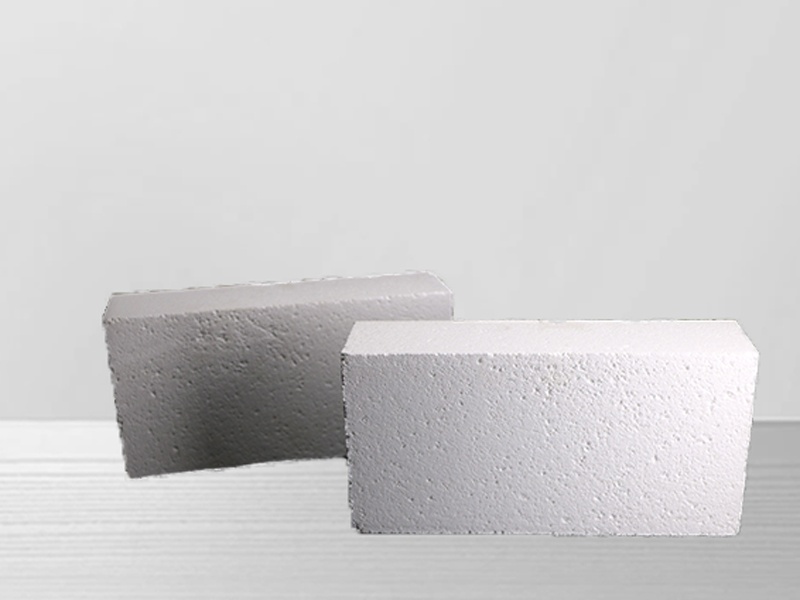Applications of Alumina Bubble Brick
Alumina bubble brick is a lightweight refractory material that is used in a wide variety of high-temperature applications. It is made from alumina bubbles, which are tiny spheres of alumina that are filled with air. This unique structure gives alumina bubble brick a number of properties that make it well-suited for use in extreme environments.

Properties of Alumina Bubble Brick
Alumina bubble brick has a number of properties that make it a valuable material for high-temperature applications. These properties include:
Low thermal conductivity: Alumina bubble brick has a very low thermal conductivity, which means that it does not conduct heat well. This makes it an excellent insulator, and it can be used to reduce heat loss in furnaces, kilns, and other high-temperature equipment.
High thermal shock resistance: Alumina bubble brick is highly resistant to thermal shock, which means that it can withstand rapid changes in temperature without cracking or spalling. This makes it ideal for use in applications where the temperature fluctuates frequently.
Low weight: Alumina bubble brick is much lighter than other types of refractory bricks, such as fireclay bricks and silica bricks. This makes it easier to handle and install, and it can also reduce the weight of furnaces and other equipment.
Good chemical resistance: Alumina bubble brick is resistant to a wide variety of chemicals, including acids, alkalis, and salts. This makes it ideal for use in applications where the refractory brick will be exposed to harsh chemicals.
High temperature resistance: Alumina bubble brick has a high melting point of up to 3,200 degrees Fahrenheit (1,760 degrees Celsius). This makes it ideal for use in high-temperature applications, such as furnaces, kilns, and incinerators.
Applications of Alumina Bubble Brick
Alumina bubble brick is used in a wide variety of high-temperature applications, including:
Furnace and kiln insulation: Alumina bubble brick is commonly used to insulate the walls, roofs, and floors of furnaces and kilns. It can help to reduce heat loss and improve energy efficiency.
Steel ladles: Alumina bubble brick is used to line steel ladles, which are vessels used to transport molten steel from the furnace to the casting area. It can help to protect the ladles from the heat and corrosion of molten steel.
Incinerators: Alumina bubble brick is used to line the walls and roofs of incinerators. It can help to protect the incinerators from the high temperatures and corrosive effects of the incineration process.
Petrochemical plants: Alumina bubble brick is used to insulate pipes, valves, and other equipment in petrochemical plants. It can help to reduce heat loss and improve safety.
Power plants: Alumina bubble brick is used to insulate boilers, turbines, and other equipment in power plants. It can help to improve plant efficiency and reduce emissions.
Advantages of Alumina Bubble Brick
Alumina bubble brick has a number of advantages over other types of refractory materials, including:
Low thermal conductivity: Alumina bubble brick is a much better insulator than other types of refractory materials, such as fireclay bricks and silica bricks. This can help to reduce heat loss and improve energy efficiency.
High thermal shock resistance: Alumina bubble brick is more resistant to thermal shock than other types of refractory materials. This means that it can withstand rapid changes in temperature without cracking or spalling.
Low weight: Alumina bubble brick is much lighter than other types of refractory materials. This makes it easier to handle and install, and it can also reduce the weight of furnaces and other equipment.
Good chemical resistance: Alumina bubble brick is resistant to a wider range of chemicals than other types of refractory materials. This makes it more versatile and can be used in a wider range of applications.
Disadvantages of Alumina Bubble Brick
Alumina bubble brick also has some disadvantages, including:
Higher cost: Alumina bubble brick is more expensive than some other types of refractory materials, such as fireclay bricks and silica bricks.
Lower strength: Alumina bubble brick is not as strong as some other types of refractory materials.

Discussion